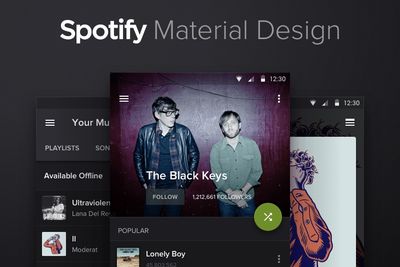
Inspired by the 2017 total solar eclipse, Android's new software update has been named Android O – or as Google pronounces it – Android Oreo!
As we all know, Google's mobile operating system Android has always been named after a dessert and in alphabetical order – and this is not the first time Google has borrowed the name from a brand – KitKat was even involved in an earlier version.
Now, Android's new version Android 8.0 is named after the famous cookie brand Oreo! After over a year of development and months of testing with developers and early adopters, Android 8.0 goes live.
The new mobile OS version will bring lots of new features – including picture-in-picture, autofill, integrated Instant Apps, Google Play Protect, a faster boot up and more.
Google has already begun to push out the source codes to AOSP so everyone (developers) can use and create their own third-party ROMS, and manufacturers can use them for upgrading their handsets accordingly.
Google has confirmed that they have been working closely with smartphone manufacturers Essential, Huawei, HTC, Kyocera, Motorola, Nokia, Samsung, Sharp and Sony – who are scheduled to launch and upgrade new devices to Android Oreo.
Google took a great opportunity and revealed Oreo during the rare Solar Eclipse this year, so what does Oreo bring to the table?
Well, Android 8.0 Oreo is focusing on creating fluid experiences that will make Android even more powerful and easy to use. Here are some of the main new features that Android 8.0 Oreo brings:
Picture-in-picture: This allows users to manage more than one task at the same time on any size screen, and it is easy for apps to support it.
Notification dots: this extends the reach of notifications and offers a new and interesting way to surface activity on your apps. These dots work with zero effort for most apps, and even extracts the colour of the dot from an icon! This one has been available on Samsung and LG smartphones for quite a while actually...
Autofill framework: this simplifies how users set up a new device and sync their passwords. Apps that use form data can now optimize their apps for Autofill, and password manager apps can use the new APIs to make their services available to users in their favourite apps! Autofill will come to us fully in the next few weeks as part of an update to Google Play Services.
In addition, Android O is intensely optimized for battery life optimisation – apart from startup time, graphics rendering and stability.
System optimisations: Google has worked the system to make sure apps run faster and smoother. For example, in the runtime, a new concurrent compacting garbage collection, code locality and more have been added.
Background limits: New limits have been added on background location and Wi-Fi scans and change the way apps run in the background. These limits prevent unintentional overuse of battery life and memory and apply to all apps.
Complimentary Android Vitals dashboards and IDE profiles: In the Play Console, you can now see aggregate data about your apps to help you pinpoint common issues such as excessive reach rates, ANR rates, frozen frames, slow rendering, excessive wakeups and more. In addition, you'll find new performance profilers in Android Studio 3.0, and new instrumentation in the platform.
Google has made building apps better and more efficient for developers!
Autosuzing TextView: Developers can now use auto-sizing TextView to automatically fill a TextView with text – regardless of the amount. So, developers can create a variety of preset text sizes, or set minimum and maximum sizes with a step granularity and the text will increase or decrease in size to fill the available TextView space.
Fonts in XML: Now, fonts are a fully supported resource type! Developers may use fonts in XML layouts and define font families in XML.
Downloadable fonts and emojis: with downloadable fonts, developers can now load fonts from a shared provider instead of including them in your APK. The provider and support library manage the download of the fonts and shares them across apps. The same also supports downloadable emojis, so you can get updates emojis without being limited to the emojis built into your device.
Adaptive Icons: developers can now create adaptive icons that the system will display in different shapes, based on a mask chosen by a device manufacturer. This also animates interactions with the icons and uses them in the launcher, shortcuts, settings, sharing dialogues, and in the overview screen.
Shortcut Pinning: App shortcuts and home screen widgets on your device are useful for engaging users. Now, developers can let users add and pin shortcuts and widgets to the launcher from within your app. In addition, there is a new option to add a specialised activity to help users create shortcuts.
Wide-gamut colour for apps: Imaging apps can now take full advantage of new devices that have a wide-gamut colour capable display. To display wide gamut images, apps will enable a flag in their manifest files (per activity) and load bitmaps with an embedded wide colour profile (AdobeRGB, Pro Photo RGB, DCI-P3, etc.).
WebView Enhancements: The new Android Oreo now enables WebView multi-process mode by default and adds an APU to allow apps to handle errors and crashes. In addition, developers can now opt-in app's WebView objects to verify URLs through Google Safe Browsing.
Java 8 Language APIs and Runtime Optimisations: Now, Android supports a variety of new Java Language PISs – including the new java.time API. The Android Runtime is also faster than ever before, with improvements of up to 2x on some application benchmarks.
Android 8.0 is the first release of the Oreo series, and we can expect even more improvements in the Oreo's life cycle in later versions. The latest release is the first public showing of Oreo with the possibility of some unknown bugs, If you have Google Pixel or Nexus, then you have a taste of the new cookie in town immediately!
Phones with custom Android versions will only receive the update depending on how fast their manufacturers oblige with the implementation.
Go Android Oreo – we have a lot to look forward to!













